Text

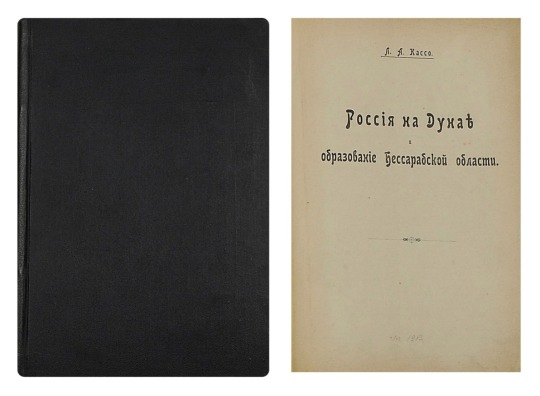



On the photographs: top left: History of the Byzantine Empire by Uspensky; top right: Russia on the Danube by Casso; in the middle: Merezhkovsky’s trilogy ‘Peter’; at the bottom left: Merezhkovsky’s novel ‘Alexander I’; bottom right: The Maritime Idea in Russian Land by Sr. Lt. Kvashnin-Samarin.
During his home arrest in Tsarskoe selo (spring-summer 1917), Nicolas II read lots of books - 32 to be precise. Some of the books he read aloud in the evenings to his daughters and wife, Alexandra Feodorovna, and some he read alone for himself. From the entries of his diary it appears that he read in Russian, English, and French languages.
Here is a list of the books together with the quotes from Nicolas II diary of spring-summer 1917:
Books that Nicholas II read in Tsarskoe Selo:
‘In the evening, read Chekhov aloud.’ (24 March 1917)
‘Started reading History of the Byzantine Empire by Uspensky.’ (4 April 1917)
‘In the evening, started reading aloud to the daughters the book by C. Doyle The Valley of the Fear.’ (14 Aapril 1917)
‘In the evening, started reading aloud to the children A Millionaire Girl.’ (18 April 1917)
‘Before lunch, read Hist.[ory] Byzant.[ine] Emp.[ire], and in the evening upstairs read aloud.’ (21 April 1917)
‘Finished reading the interesting History of the Byzantine Empire by Uspensky — 870 large pages.’ (25 April 1917)
‘Before lunch, started reading the book by Casso Russia on the Danube. (26 April 1917
'Started aloud the book S. Holmes - The Hound of the Baskervilles'. (9 April 1917)
'In the evening, started reading aloud Le Mystère de la Chambre Jaune'. (4 May 1917)
'In the evening, read aloud the book Le Parfum de la Dame en Noir, which started on May 11th'. (13 May 1917)
'Yesterday, started reading aloud Le Fauteuil Hanté. (20 May 1917)
In the evening, started reading aloud Le Comte de Monte-Christo'. (25 May 1917)
'In the evening, started reading the second volume Le Comte de Monte-Christo'. (31 May 1917)
'Started the 3rd volume Le Comte de Monte-Christo'. (5 June 1917)
'Started the French book La Maison des Hommes Vivants'. (14 June 1917)
'Finished La Maison des Hommes Vivants'. (16 June 1917)
'In the evening, started aloud the 6th book Comte de Monte-Christo'. (21 June 1917)
'In the evening, finished reading Le Comte de Monte-Christo'. (26 June 1917)
'In the evening, started aloud Arsène Lupin contre Sherlock Holmes'. (27 June 1917)
'In the evening, started aloud L’Homme à l’Oreille Cassée'. (2 July 1917)
'In the evening, started Tartarin de Tarascon'. (6 July 1917)
'Finished reading aloud Tartarin de Tarascon'. (9 July 1917)
'In the evening, started reading aloud Tartarin sur les Alpes'. (10 July 1917)
'Finished reading the 3rd part of Merezhkovsky’s trilogy ‘Peter’; well written, but leaves a heavy impression'. (11 June 1917)
'In the evening, finished reading aloud Tartarin sur les Alpes'. (14 July 1917)
'In the evening, I was pasting photographs into my album. Started reading aloud The Luck of the Vails'. (15 July 1917)
'Now reading Merezhkovsky’s novel ‘Alexander I’'. (19 July 1917)
'After tea, finished the 1st volume ‘Alexander I’. (21 July 1917)
'In the evening, finished The Luck of the Vails'. 923 July 1917)
'After lunch, started reading aloud The Poison Belt by Conan Doyle'. (24 July 1917)
'Reading The Maritime Idea in Russian Land by Sr. Lt. Kvashnin-Samarin'. (27 July 1917)
'In the evening, read aloud A Study in Scarlet by Conan Doyle'. (28 July 1917)
Compiled by Seraphima Bogomolova
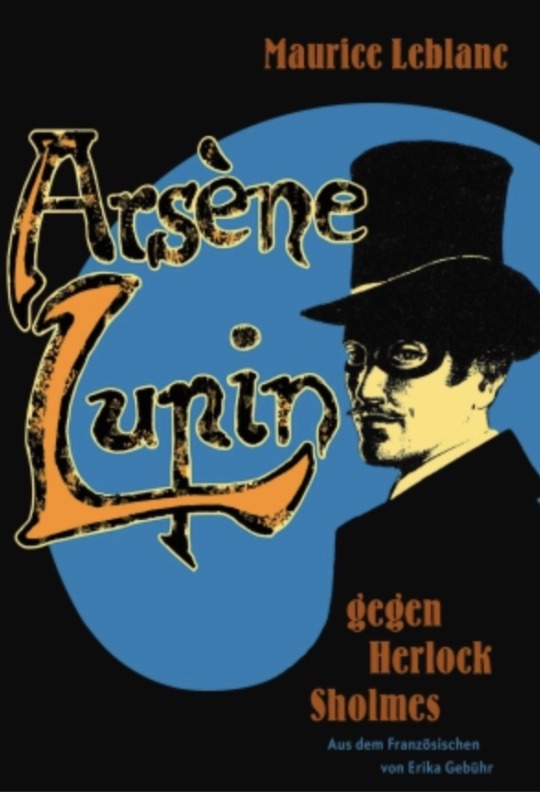
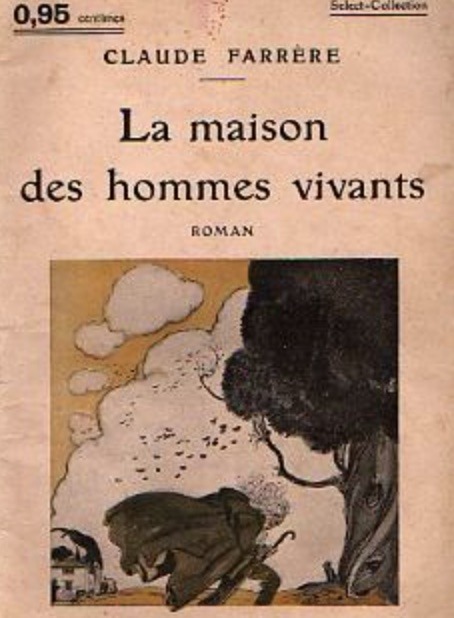


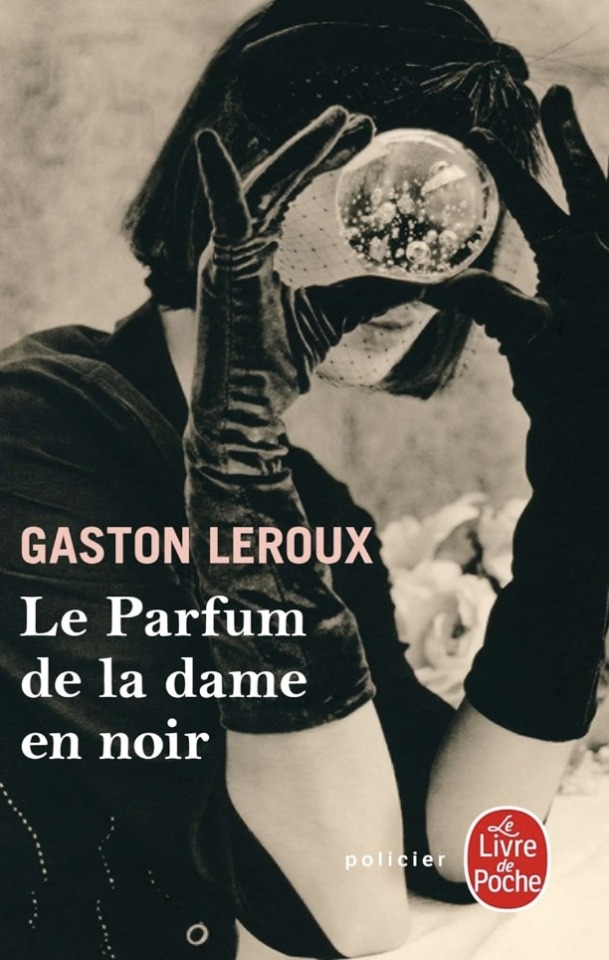
#research#romanovs#investigation#seraphima bogomolova#alexandrovsky palace#tsarskoe selo#spring 1917#Nicolas II#books#reading
1 note
·
View note
Text





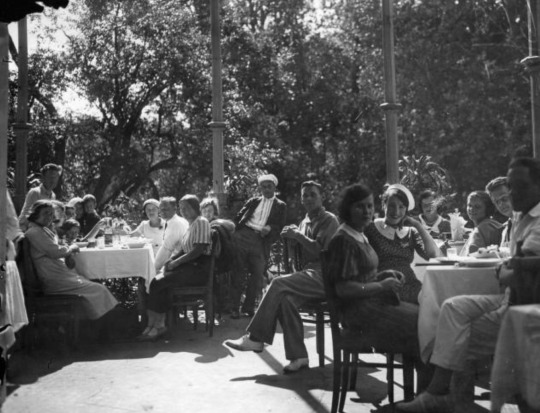
On the photographs: top left: Alexei Nikolaevich in front of the Alexandrovsky Palace, 1914; top middle: Alexandrovsky Palace in 1931; top right: children from the orphanage at the Alexandrovsky Palace, 1931; second row: left: a group of NKVD members at Alexandrovsky Palace sanatorium, 1938; right: children from the orphanage at Alexandrovsky Palace park, 1931; bottom: the terrace of the Alexandrovsky Palace sanatorium, 1936.
Alexandrovsky Palace in Tsarskoe selo through 20th and 21st century.
1905-summer 1917 - the residence of Nicolas II and his Family
1918- 1932 - a museum of the household of Nicolas II and the Family, a sanatorium for the members of NKVD (People's Commissariat for Internal Affairs), and an orphanage in the rooms of Nicolas II's children.
In 1932 the orphanage was closed and the toys and the furniture of the rooms were given to the Toys Museum.
In 1940s, during the German occupation, the Alexandrovsky palace housed German military headquarters and Gestapo; in the basements of the Palace there was a prison, and the square in front of the Palace was turned into the grave yard for the German officers.
In 1951, the Palace housed the Military Navy college, and then a Military Research Institute until end of 1990s.
All of the interiors and the collections of the Palace were given for safekeeping to the Palaces in Pavlovsk and to the Palace of Catherine II (Ekaterininsky Palace)
In 1997 the first exhibition dedicated to the Palace took place in the building and in 2009 the Alexandrovsky Palace became part of the Museum complex of Tsarskoe Selo.
In 2015, the renovation and reconstruction works started.
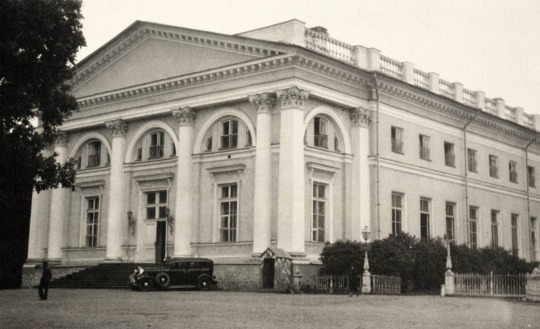


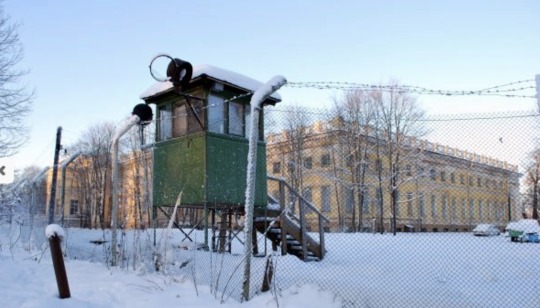

On the photographs: top left: Alexandrovsky Palace, 1940; top right: Alexandrovsky Palace after WWII; middle row: the square in front of the Alexandrovsky Palace turned into the graveyard for the German officers (WWII); bottom left: the watch tower of the Military Research Institute at Alexandrovsky Palace in 1990s; bottom right: Alexandrovsky Palace, part of the Tsarskoe Selo Museum complex, present day
#research#romanovs#nicolas ii#seraphima bogomolova#alexandrovsky palace#photographs#history#tsarskoe selo
0 notes
Text


On the images: on the left a migration path of mtDNA H1af2 - the mtDNA of Alexandra Feodorovna maternal line; on the right the region in France where the earliest mtDNA ancestor of Alexandra Feodorovna originated from.
What is known about the mtDNA of Alexandra Feodorovna (Alix of Hesse)?
The mtDNA of Alexandra Feodorovna: H1af2 (source FBI Laboratory - 2018)
The earliest known ancestor: Alba Autun (846-?)- France
The year of formation of the mtDNA: 100 BCE
Number of descendants: 11 (the ones who took mtDNA test with FTDNA)
Current location of the descendants: France, Switzerland, and Germany
#investigation#research#romanovs#seraphima bogomolova#mtDNA#Alexandra Feodorovna#ancestry#Alix of Hesse
1 note
·
View note
Text



On the photograph: on the left - Alix of Hesse in the ball gown; on the right and below - the shell pink and white silk brocade with the sleeves of shiffon ball gown made in 1894.
The State Hermitage Museum, St Petersburg, Russia, holds this charming ball gown from 1894. It was owned and worn by the then Princess Alix of Hesse soon to become the Empress Alexandra Feodorovna, wife to Nicholas II.
The gown was made in Frankfurt, Germany, though the maker’s name is lost to time.
In the two accompanying photographs Princess Alix is shown wearing the dress with a cummerbund style belt which has not survived with the gown.
#investigation#research#romanovs#nicolas ii#seraphima bogomolova#photographs#Saint Petersburg#fashion#dress#Alexandra Feodorovna#Alix of Hesse#hermitage museum
4 notes
·
View notes
Text
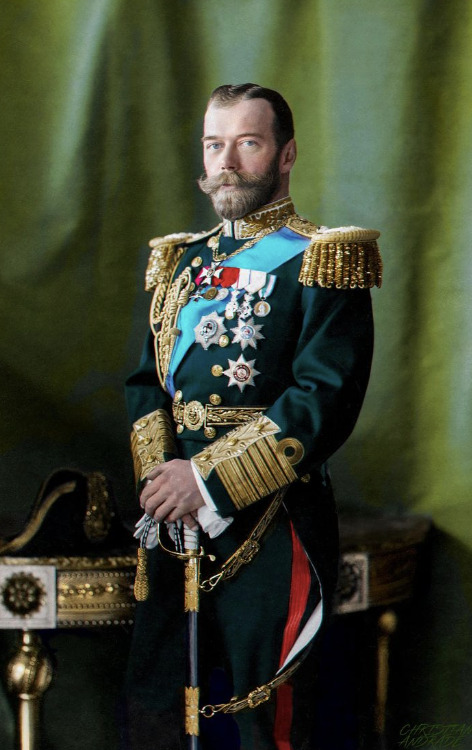
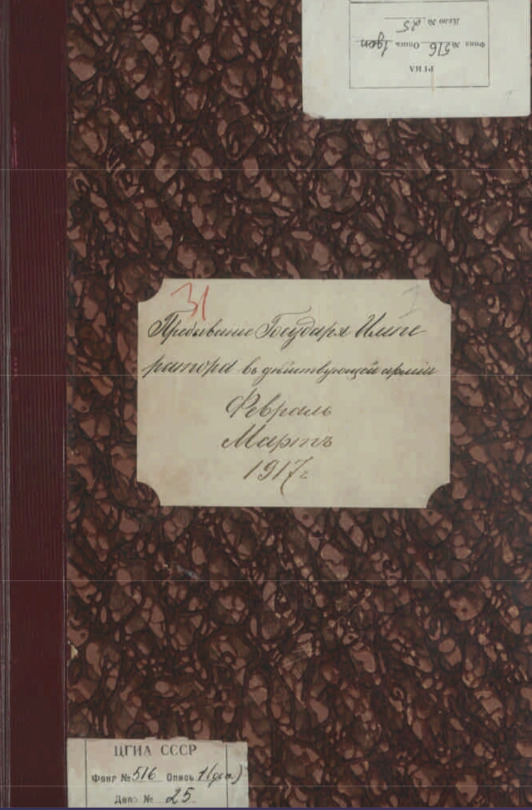
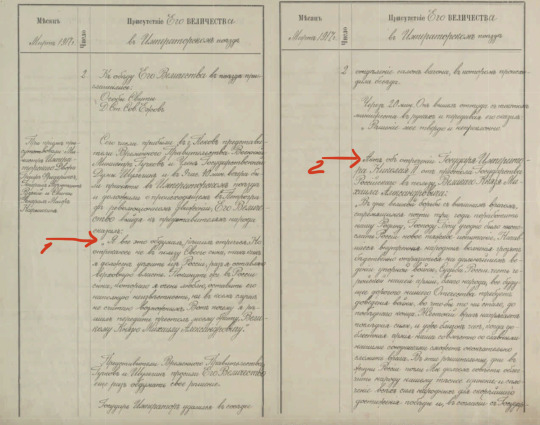
On the photographs: from the top left: Nicolas II (Nikolai Alexandrovich), the son of Alexander III and Maria Feodorovna (Dagmar of Denmark); top right: the cover of the Journal; bottom - the spread form the Journal with mark 1 in red showing Nicolas II's explanation why he had abdicated in favour of his brother, Mikhail Alexandrovich on 2 March 1917.
Challenges are important part of our lives. How we face them determine who we are. There is a saying 'We make choices but the choices we make make us.'
What kind of choices did Nicolas II make in the spring-summer 1917 that made him?
One of his choices was: Abdication for himself and for his son, Alexei Nikolaevich
What did it make him?
A person without official responsibilities and obligations assigned at the time to the Royal position he held as an Emperor.
What did it make his son?
An heir without a throne or a son of an abdicated Emperor who did not have any official 'future' or obligations or responsibilities. A sort of 'nobody' with the Royal background.
Did Nicolas II have the right to abdicate for his son?
Not really. Not according to moral standards.
What should Nicolas II have done from human and moral point of view in this situation?
A: Consulted his son who was grown up enough to make his own choice, or, at least, should have talked to him on the phone before signing an abdication for him. By the way he had a phone in his Military Headquarters.
How did he explain his decision in the statement he provided?
As per the entry in the Journal ' The stay of the Tsar Nicolas II in the Army, February-March 1917', Nicolas II's decision and the speech was recorded as thus:
'I have thought through the situation and decided to abdicate but not in favour of my son because I have to leave Russia as I am leaving the reigns of power. But to leave the son whom I love very much in Russia to the utter unknown is absolutely out of the question. That is why I decided to abdicate in favour of my brother Mikhail Alexandrovich.' - source Journal ' The stay of the Tsar Nicolas II in the Army, February-March 1917'
Did the choice Nicolas II make had consequences for him and his Family?
Yes it did. The difference though between him and his Family members was that they were not consulted and had to live on and face the challenges coming out of the choice Nicolas II made for himself and them.
What does this illustrate?
It illustrates that the higher responsibility and position in life a person has the more careful he/she should be with his decisions, especially if they are made on behalf of others, in this case on behalf of Aleksei Nikoalevich.

On the photograph: Aleksei Nikolaevich, the son of Nicolas II and Alexandra Feodorovna (Alix of Hesse), and his dog, Joy.
#investigation#research#romanovs#nicolas ii#seraphima bogomolova#evidence#murder mystery#photographs#abdication#AlekseiNikolaevich#Joy#dog#spring 1917#Pskov
1 note
·
View note
Text

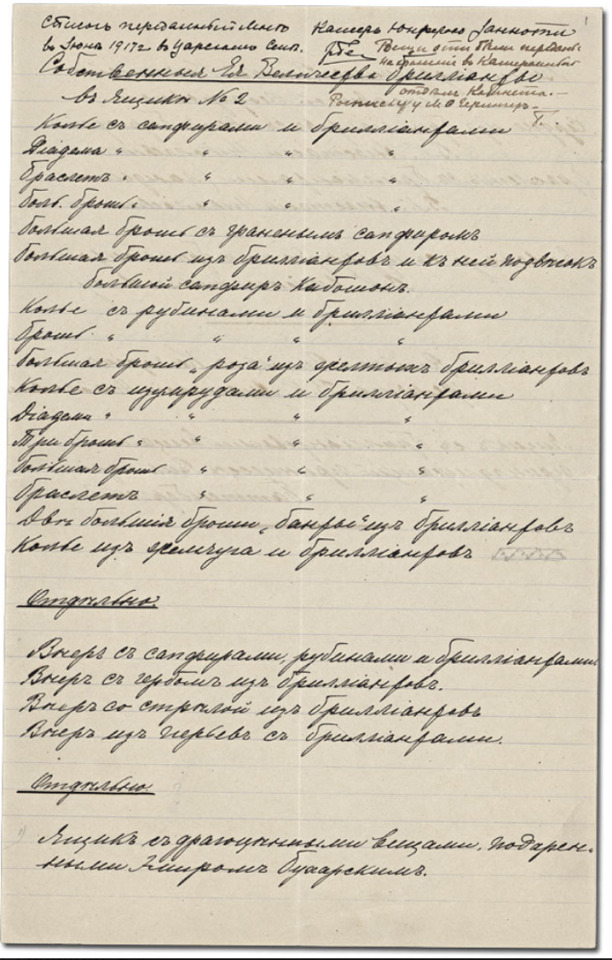

On the photographs: top - Paul Leopold Johann Stephan (Pavel Konstantinovich) von Benckendorff (10 Apr 1853-29 Jan 1921) in the costume of the Ball 1903; bottom: a list of personal jewellery belonging to Alexandra Feodorovna which she gave to Paul Benkerdoff for safekeeping; on the right - the translation of the list into English.
In June 1917 while in Tsarskoe Selo, the former Empress Alexandra Feodorovna passed her personal jewellery to Paul von Benckendorff for safekeeping. He then sent it to the Vault Department of the Cabinet where some personal belongings of the Family were kept.
On 31 July 1917 The Family left Tsarskoe Selo for Tobolsk. Most likely the personal jewellery of Alexandra Feodorovna in the above list stayed in the Cabinet.
Extra info: Paul (Pavel Konstantinovich) Benckendorff parted with the Family when they went to Tobolsk. He was the second husband of Princess Maria Srgeevna Dolgorukova (14 Dec 1846-1936) who was the mother of Vasili Alexandrovich Dolgorukov (13 Aug 1868 -1918), a friend and supporter of Nicolas II. Valya Dolgorukov went with the Family to Tobolsk and Ekaterinburg, but in Ekaterinburg was not allowed into the Ipatievsky House. According to some sources, he was executed in 1918.
#investigation#research#romanovs#nicolas ii#seraphima bogomolova#evidence#murder mystery#photographs#alexandrovsky palace#tsarskoe selo#jewellery#Benckendorff#Alexandra Feodorovna#June 1917
0 notes
Text

On the photograph: Nicolas II and Alexandra Feodorovna, Tsarskoe Selo, summer 1917
[...] In June and July 1917, Alexandra Feodorovna made several more appearances, all recorded in her husband’s diary and not a word in hers – on the 2nd of June: ‘In the afternoon, Alix was present during our working at yesterday's place’; on the 14th of June: ‘In the morning I walked with all the children in the park. The weather was great. At 12 o'clock went to the prayer service. In the afternoon, Alix came out with us’; On the 21st of June: ‘During the working in the park, Alix was present in her chair’; and finally, the 23rd of July: ‘During the day we worked on a narrow path, cut down and sawed two spruce trees. Alix was sitting there in the forest.’
From the above it appears that the activities of Nicolas II and others outside did not interest Alexandra Feodorovna much. At least, she did not wish to be directly associated with them. It seems that her intentional withdrawal manifested the dislike and disagreement with her changed status, - she was not the wife of the Emperor anymore, but the wife of the abdicated Emperor who was under home arrest and to add to this was doing the activities of a simple ‘peasant’. Hence, her resistance. [...] - Seraphima Bogomolova
Read more in Part One: 'Like Kings and Queens, Like Princes and Princesses'
#investigation#research#romanovs#seraphima bogomolova#evidence#murder mystery#photographs#alexandrovsky palace#tsarskoe selo#Alexandra Feodorovna#Nicolas II#summer 1917
27 notes
·
View notes
Text
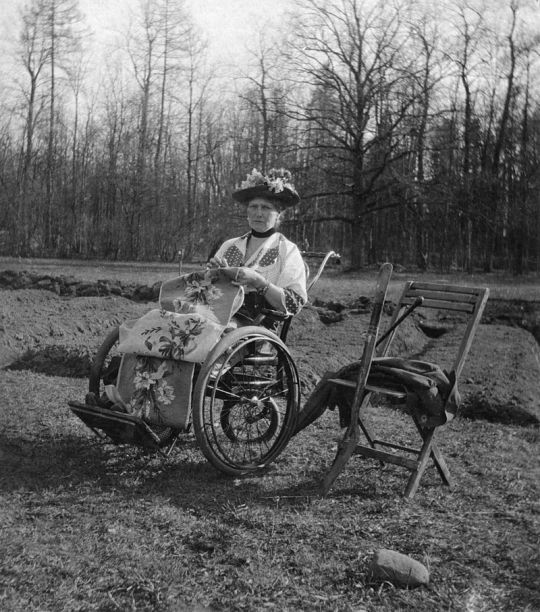
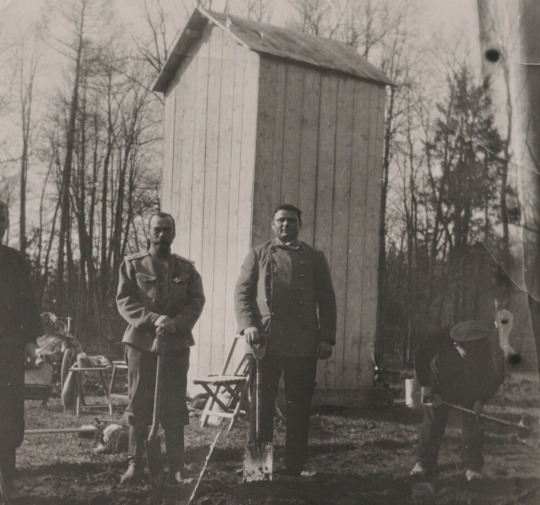

On the photographs: top - Alexandra Feodorovna in her wheel chair outside in the vegetable garden, embroidering, Tsarskoe Selo, April 1917; bottom: Nicolas II with his 'team' working in the vegetable garden in Tsarskoe Selo, spring 1917
'The ‘absence’ of Alexandra Feodorovna
One of the striking observations I made while studying the photographs of the Family for the period of March-July 1917 was the obvious and clear absence of Alexandra Feodorovna on them. Those couple of photographs where she did appear picture her motionless, a sort of frozen. She was not only absent from the photographs and took very little part in the outside activities but she also was absent from her own diary. In the period of March-July 1917, she made just a handful of diary entries on the following dates:
March 1917, Tsarskoe Selo
1, 2, 3, 4, 5, 8, 9, 10, 21, 22, 23, 27
April 1917, Tsarskoe Selo
1, 2, 8, 11, 12, 14, 15, 18, 23, 29, 30
May 1917, Tsarskoe Selo
6, 25, 26
June 1917, Tsarskoe Selo
3, 9, 10, 20
July 1917, Tsarskoe Selo
11, 13, 25, 29, 30, 31
The first time Alexandra Feodorovna made an appearance in ‘public’, e.g. went outside and sat in the garden was on the 11 of April. This occasion found a reflection in the diary entry of Nicolas II: ‘In the afternoon, Alix finally went for a walk with us. Nagorny pushed her in a wheel chair. She watched us work with the ice.’ In her own dairy, Alexandra Feodorovna described her appearance as follows: ‘In my wheel chair [was] in the garden with the others who were working with ice.’ [...] - Seraphima Bogomolova
Read more in Part One: 'Like Kings and Queens, Like Princes and Princesses'
#investigation#research#romanovs#nicolas ii#seraphima bogomolova#evidence#murder mystery#photographs#alexandrovsky palace#tsarskoe selo#spring 1917#Alexandra Feodorovna#vegetable garden#gardening#diaries
2 notes
·
View notes
Text

On the photograph: Nicolas II and his working team. On the right from Nicolas II — Tatyana Nikolaevna, Tsarskoe Selo, July 1917
[...] In parallel, on 21 May, Nicolas II stared cutting and sewing wood, and also doing sports: ‘sawed down a fallen tree in the garden for firewood, went kayaking and riding a bicycle.’ On 30 May, he mentions his usual working team: ‘The constants who worked with me, sawed and chopped wood: Valya D., Volkov — chamberlain of Alix, Teteryatnikov, Martyshkin, Korneev, and today a fireman was added. Present, and carrying wood were: T.[atyana], M.[aria] and An.[astasia], two officers and four riflemen of the 1st battalion.’
The sawing and cutting of the wood would continue until the Family’s departure to Tobolsk. In addition, on 18 June, Nicolas II would add to the usual sawing and cutting, also watering of the vegetable garden: ‘Before dinner, we helped the gardener water the beds.’
All the outside activities of Nicolas II are reflected and recorded in the available photographs of the period. Similarly, to the four daughters, the conclusion that can be drawn is that in the period between March and July 1917 Nicolas II underwent a personal transformation from within which translated into new behavioral patterns and interests. He was no longer a mere crowned figure out of reach, but a down to earth, practical, hard-working, and a humble individual. The gap between him and the people who surrounded and served him narrowed down. His working team of people of different social status is a great example of this — soldiers, officers, servants, aristocracy.' [...] - Seraphima Bogomolova
Read more in Part One: 'Like Kings and Queens, Like Princes and Princesses'

On the photograph: Tatyana Nikolaevna and Nicolas II in the vegetable garden in Tsarskoe Selo, July 1917
#investigation#research#romanovs#nicolas ii#seraphima bogomolova#evidence#murder mystery#photographs#alexandrovsky palace#tsarskoe selo#vegetable garden#Tatyana Nikolaevna#gardeining#July 1917
0 notes
Text
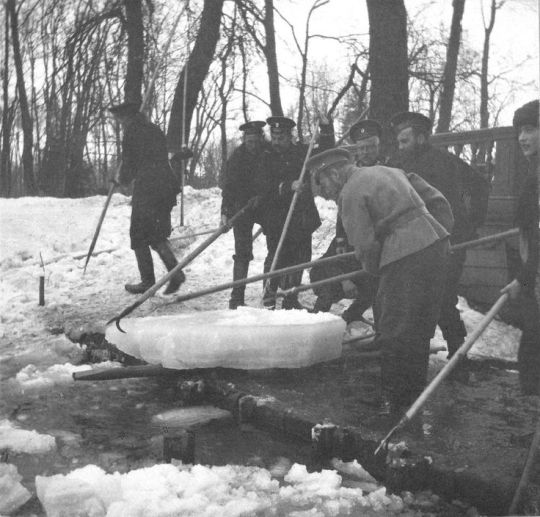
On the photograph: Nicolas II breaking the ice on one of the cnals in Tsarskoe Selo, April 1917
The new ‘hobby’ of Nicolas II
[...] According to his diary, Nicolas II started his new ‘hobby’ on the 1 of April: ‘In the afternoon, started breaking ice the old way by the bridge with a little stream; Tatyana, Valya and Nagornui worked with me’. This activity lasted till 27 April: ‘From 2.20pm to 4.30pm we walked and at the same place broke the last ice floes.’
Right after, on 28 April, Nicolas II started his work in the vegetable garden: ‘began work on setting up a vegetable garden in the park opposite the windows of the house. T.[atyana], M.[aria], Anast.[asiya] and Valya [Dolgorukov] were actively digging up the ground, and the commandant and guard officers watched and sometimes gave advice.’ The work of digging and preparing the ground continued throughout May. On the 19 of May, there were already 65 beds in the vegetable garden noted in the diary of Nicolas II: ‘During the day I diligently dug the beds with others, of which we now have 65 in total.’ [...] - Seraphima Bogomolova
Read more in Part One: 'Like Kings and Queens, Like Princes and Princesses'




On the photographs: Nicolas II working in the park and vegetable garden Tsarskoe Selo, spring 1917
#investigation#research#romanovs#nicolas ii#seraphima bogomolova#evidence#murder mystery#photographs#alexandrovsky palace#tsarskoe selo#vegetable garden#park#ice#snow#gardening
1 note
·
View note
Text

On the photograph: Nicolas II and a rifleman carrying the wood, Tsarskoe Selo, summer 1917
The new ‘hobby’ of Nicolas II
The Family’s photographs of the Tsarskoe Selo period also revealed a new ‘hobby’ of Nicolas II which sprang out of the changed routine. Being limited in his personal freedom of movement and not having his usual status related preoccupations he must have had a real urge for action, achievement, and activities outside of his royal home e.g. Alexandrovsky Palace. This urge transformed into activities of pure physical nature — cutting and sawing wood, breaking ice, working in the garden, and doing some sports such as kayaking, walking, riding a bike. Whilst walking, kayaking, and riding a bike were not new to him, cutting and sawing wood certainly was, as previously he, as a crowned head of state, did not engage in such activities. [...] - Seraphima Bogomolova
Read more in Part One: 'Like Kings and Queens, Like Princes and Princesses'

On the photograph: Nicolas II and the footman, Franz Gurovsky, sawing the tree, June 1917
#investigation#research#romanovs#nicolas ii#seraphima bogomolova#evidence#murder mystery#photographs#alexandrovsky palace#tsarskoe selo#hobby#cutting wood#summer 1917
0 notes
Text
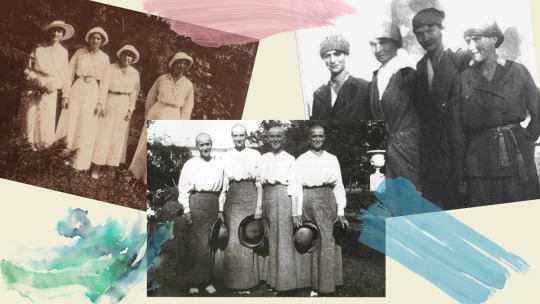
On the photographs: the grand Duchesses - Olga, Tatyana, Maria, and Anastasia, Tsarskoe Selo, spring-summer 1917
[...] The observations gathered about the four daughters by examining the photographs of the spring-summer 1917 reveal important clues to the future fate of the young women. The most important conclusion that can be drawn is that the four young women of spring-summer 1917 were not the same Grand Duchesses whom people used to know and observe before the abdication of Nicolas II. These were the women without royal regalia, without official titles, without even clear future, who changed not only externally but also internally. The Grand Duchesses of the prior life were a mirage, a dream like image that had nothing to do with their new reality. Yet, it is exactly this ‘mirage’ that would be used in July 1918 to create a certain needed impression. The world would be stuck with the ‘mirage’, the former Grand Duchess would move on. [...] - Seraphima Bogomolova
Read more in Part One: 'Like Kings and Queens, Like Princes and Princesses'
#investigation#research#romanovs#nicolas ii#seraphima bogomolova#evidence#murder mystery#photographs#alexandrovsky palace#tsarskoe selo#Tatyna Nikolaevna#Maria Nikolaevna#Olga Nikolaevna#Anastasia Nikolaevna#summer 1917
0 notes
Text
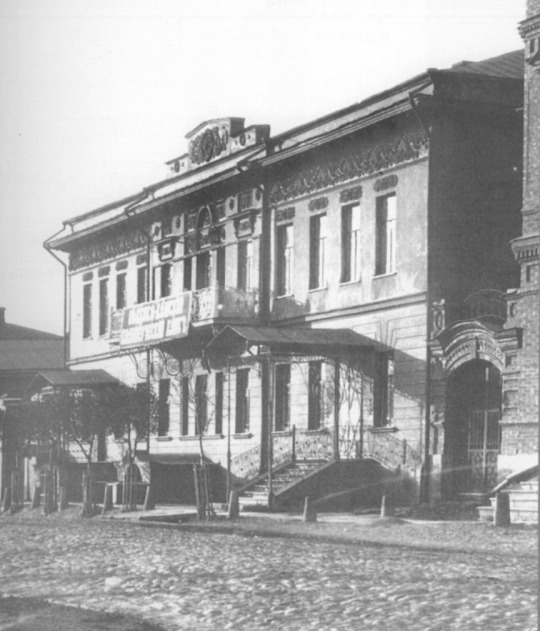
On the photo: the building of the Volgsko-Kamsky Bank (VKB), the branch in Ekaterinburg, Russia
The VKB (Volgsko-Kamsky Bank) branch in Ekaterinburg was the branch where in July 1918 the box N 1 with the listed gold jewellery items belonging to the Tsar Family was found. The list of the gold jewellery items was done by Yakov Mikhailovich Yurovsky (7 June 1878 - 2 August 1938), and his assistant Georgi Petrovich Nikulin (27 December 1894 – 22 September 1965). The box was in the possession of Nicolas II. Why and how it ended up in the VKB is not known.
About the bank:
One of the largest Russian Commercial banks in the Ural Region. Founded in 1870 (founding capital - 18 million rubles, reserve capital - 13 million rubles). The branch in Ekaterinburg was opened in 1872.
According to 1913 data, the bank's board included: V.V. Windelbandt (Direcor of the Committee, the former Director of the St. Petersburg GB Office), A.F. Mukhin, F.S. Malyshev, V.F. Sollogub.
On the board - V.V. Prozorov, D.P. Bakhrushin, G.P. Bennigsen, V.P. Bradke, V.P. Verkhovsky, S.V. Kokarev, N.A. Kostylev, E.L. Nobel , V.N.Pechkovsky, I.K.Polyakov, V.A.Poklevsky-Kozel, Ya.V.Ratkov-Rozhnov, dir. Ekat. Branch - F.A. Zimmerman.
By 1914, in terms of the amount of balance sheets, the VKB was in the 6th place among the Russian Commercial banks (RUB 424.7 million). By the nature of its operations, VKB was a deposit-type bank (deposits amounted to up to 50%, bill accounting - 30% of liabilities, main operations - with securities).
In the beginning of the 20th century the VKB was connected through its operations with 10 Ural based firms. The interests of the bank were mostly represented in the Alapaevsky, Lysvensky, Verkh-Isetsky regions, and it did participate shares wise in the Bogoslovsky, Nevyansk, Kyshtymsky, Serginsko-Ufaleysky districts.
Source: The History of Financial Capital in Russia. M., 1948. Buranov Y.A., Corporatization of the Mining Industry of the Urals (1861-1917). M., 1982, Sapogovskaya L.V., Mining industry of the Urals at the turn of the 19th-20th centuries (to the characteristics of monopolization processes). Ekaterinburg, 1993, L.V. Sapogovskaya.
Read more in Part One: 'Like Kings and Queens, Like Princes and Princesses'
#investigation#research#romanovs#nicolas ii#seraphima bogomolova#murder mystery#evidence#photographs#Ekaterinburg#Volgsko_Kamsky Bank#jewelelry#gold#summer 1918
0 notes
Text
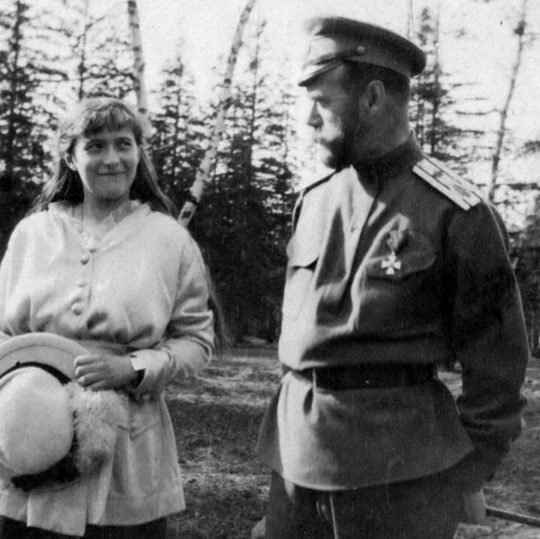
On the photograph: on the left Anastasia Nikoalevna, on her left wrist a watch with leather band is visible, and Nicolas II, Tsarskoe selo.
[...] 'The watch of Anastasia Nikolaevna does not seem to be included on the list of the gold items belonging to the Family. Perhaps her watch was not regarded as valuable enough to remove or perhaps she was not wearing it at the moment of the items being listed and it was not included on the list. What is visible on the photographs is that it was a watch with a leather band. There is a mention of the red watch box that was listed as number 70 on the list. It might have been the box for the watch of Anastasia Nikolaevna, but this is just a guess based on an assumption and cannot be really proved.[...] - Seraphima Bogomolova
Read more in Part One: 'Like Kings and Queens, Like Princes and Princesses'
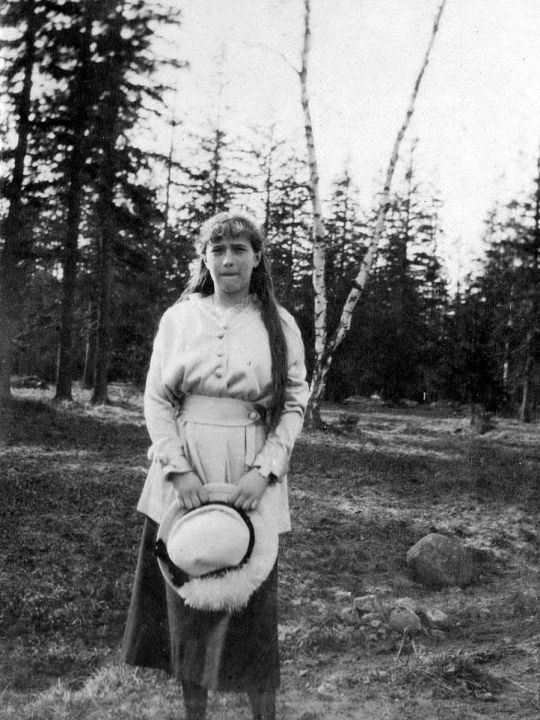
On the photograph: Anastasia Nikolaevna, holding a hat, on her left wrist a watch with leather band.
#romanovs#research#investigation#nicolas ii#seraphima bogomolova#murder mystery#evidence#photographs#alexandrovsky palace#tsarskoe selo#summer 1917#anastasia nikolaevna#watch#jewelelry
10 notes
·
View notes
Text
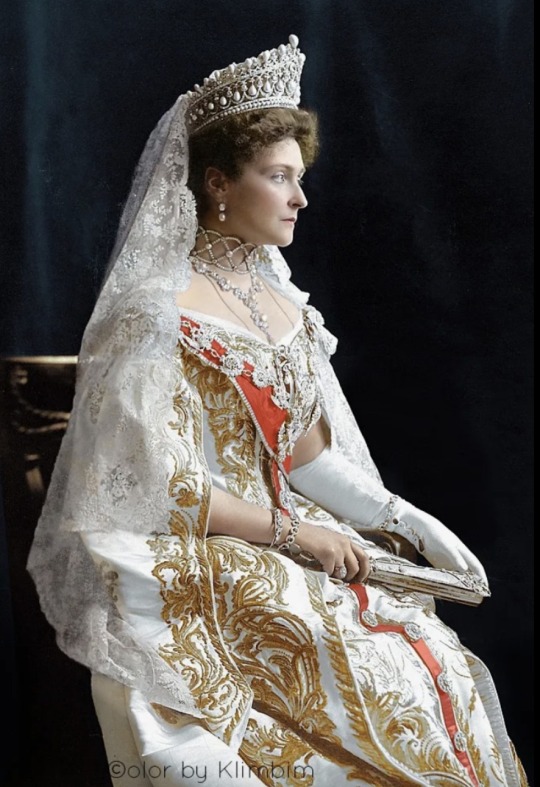

On the photographs: on the left - Alexandra Feodorovna wearing Crown jewels; on the right - a list of the personal jewels given by Alexandra Feodorovna in June 1917 to the Vault Department of the Cabinet, in Saint Petersburg.
Translation of the list presented on the photograph:
A list of jewels belonging to the Empress Alexandra Feodorovna, 1917. On the top of the list a text written in the handwriting of Marshal P.K. Benckendorff: ‘The list given to me by the Chamberlain Zannotti in June 1917 in Tsarskoe Selo. P. Be[nckendorff]. These items had been passed to the Vault Department of the Cabinet. Receipts at M.F. Geringer, B.’
Her Majesty’s Personal Jewellery in the box N 2
Sapphire and diamond necklace
Sapphire and diamond diadem
Sapphire and diamond bracelet
Big sapphire and diamond brooch
Big brooch with faceted sapphires
Big diamond brooch with a pendant – a big sapphire cabochon
Ruby and diamond necklace
Ruby and diamond broch
Big diamond brooch in the form of a rose
Emerald and diamond necklace
Emerald and diamond diadem
Emerald and diamond brooches (3)
Emerald and diamond big brooch
Emerald and diamond bracelet
Two diamond brooches
Pearl and diamond necklace
Separate
A fan with sapphires, rubies, and diamonds
A fan with the diamond coat of arms
A fan with an arrow made of diamonds
A fan of feathers with diamonds
Separate
A box with the jewels given by Emir of Bukhara
translated by Seraphima Bogomolova
The above information presented in support of the article: Part One: 'Like Kings and Queens, Like Princes and Princesses'
#Romanovs#Nicolas II#investigation#June 1917#research#evidence#jewellery#Saint Petersburg#Benckendorff#Alexandra Feodorovna#murder mystery#seraphima bogomolova
3 notes
·
View notes
Text

On the photograph: on the left, Tatyana Nikoalevna with her dog, and on the right Anastasia Nikolaevna. On the left wrist of Tatyana Nikolaevna a gold watch is visible, on the right wrist - a non-removable gold bracelet. Tsarskoe Selo, Spring, 1917
'The two watches – Tatyana’s and Olga’s – that are visible on the photographs of Tsarsko Selo period are also mentioned but not as separate items in the diaries of Nicolas II or Alexandra Feodorovna, but on the list of the gold items that was made by Yurovsky on 4-5 July 1918:
A lady’s gold watch, covered, N 242085, by Dubois Pesse. The glass is missing. The watch is smooth.
A lady’s gold watch, half open, with two dials, by Paul Buhre, N 28387. The chain is made up from the flat oval filigree segments.
These watches were in the Box № 1 of the precious items found by the whites who entered Ekaterinburg on 25 July 1918, in the vault of the Volgsko-Kamsky Bank, where the Local Council was located, at the Gold-Melting. (Source: investigative materials in the case led by the investigator, N.A. Sokolov.)' - Seraphima Bogomolova
Read more in Part One: 'Like Kings and Queens, Like Princes and Princesses'

On the photograph: The Grand Duchesses, from left to right: Anastasia Nikolaevna, Tatyana Nikolaevna, Olga Nikolaevna, and Maria Nikolaevna. On the left wrists of Tatyana Nikolaevan and Olga Nikolaevna the gold watches are visible. One of them must be N242085, by Dubois Pesse, and one by Paul Buhre, N28387. Tsarskoe Selo, July 1917.
#Nicolas II#Romanovs#murder mysetry#investigation#research#evidence#gold watches#Dubois Presse#Paul Buhre#Tatyna Nikolaevna#Olga Nikolaevna#Volgsko-Kamsky Bank#Tsarskoe selo#Alexandrovsky Palace#summer 1917#seraphima bogomolova#July 1917
0 notes
Text

On the photograph from the left to right: the Grand Duchesses Olga Nikolaevna, Tatyana Nikolaevna, Maria Nikolaevna, and Anastasia Nikolaevna. On their right wrists the gold non-removable bracelets are visible. Livadia Palace, 1916
[...] 'However, even though the amount of jewellery on the four daughters was minimal there were some pieces present and are quite visible on each photograph. These pieces are: the gold non-removable bracelets, and three watches – worn by Olga Nikolaevna, Tatyana Nikolaevna, and Anastasia Nikolaevna. The gold non-removable bracelets were worn by the daughters on their right wrists. They are not only visible on the photographs of the Tsarskoe Selo period but also on earlier ones.
The information about the gold bracelets can be found in the diary of Alexandra Feodorovna dated 4 July 1918 (new style date): ‘and a bracelet per child which we had given them as presents.’ As per the same dairy entry, Alexandra Feodorovna herself had two similar bracelets: ‘they only left me the two bracelets from uncle Leo, which are non-removable’. ‘They’ in the last quote refers to the commandant of the Ipatievsky house, Yakov Mikhailovich Yurovsky (7 June 1878 - 2 August 1938), and his assistant Georgi Petrovich Nikulin (27 December 1894 – 22 September 1965).
In his notes, Yurovsky gives more details about the bracelets in question: ‘Alexandra Feodorovna, however, expressed her displeasure when I was going to remove a gold bracelet from her hand; it was locked and it was not possible to remove it without a special tool. She proclaimed that she had been wearing the bracelet for 20 years and now it was being attempted to be removed. Taking into consideration that similar bracelets were worn by her daughters and that they were not of particular value, I decided to leave them.’ (Notes by Yurovsky Y.M. P.109, 1934)' - Seraphima Bogomolova
Read more in Part One: 'Like Kings and Queens, Like Princes and Princesses'

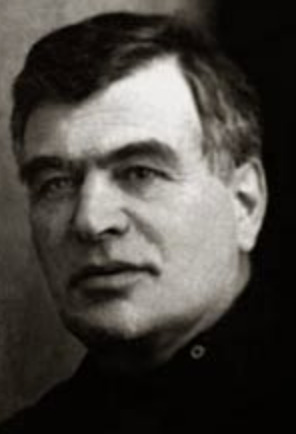
On the photographs: on the left - Georgi Petrovich Nikulin (27 December 1894 – 22 September 1965), the assistant to commandant of the Ipatievsky house; on the right - Yakov Mikhailovich Yurovsky (7 June 1878 - 2 August 1938), the commandant of the Ipatievsky house.
#Romanovs#Nicolas II#investigation#research#jewellery#Romanovs jewellery#Anastasia Nikolaevna#Maria Nikolaevna#Tatyana Nikolaevna#Olga Nikolaevna#gold bracelets#Yakov Mikhailovich Yurovsky#Georgi Petrovich Nikulin#watches#July 1918#summer 1917#seraphima bogomolova#murder mystery
4 notes
·
View notes